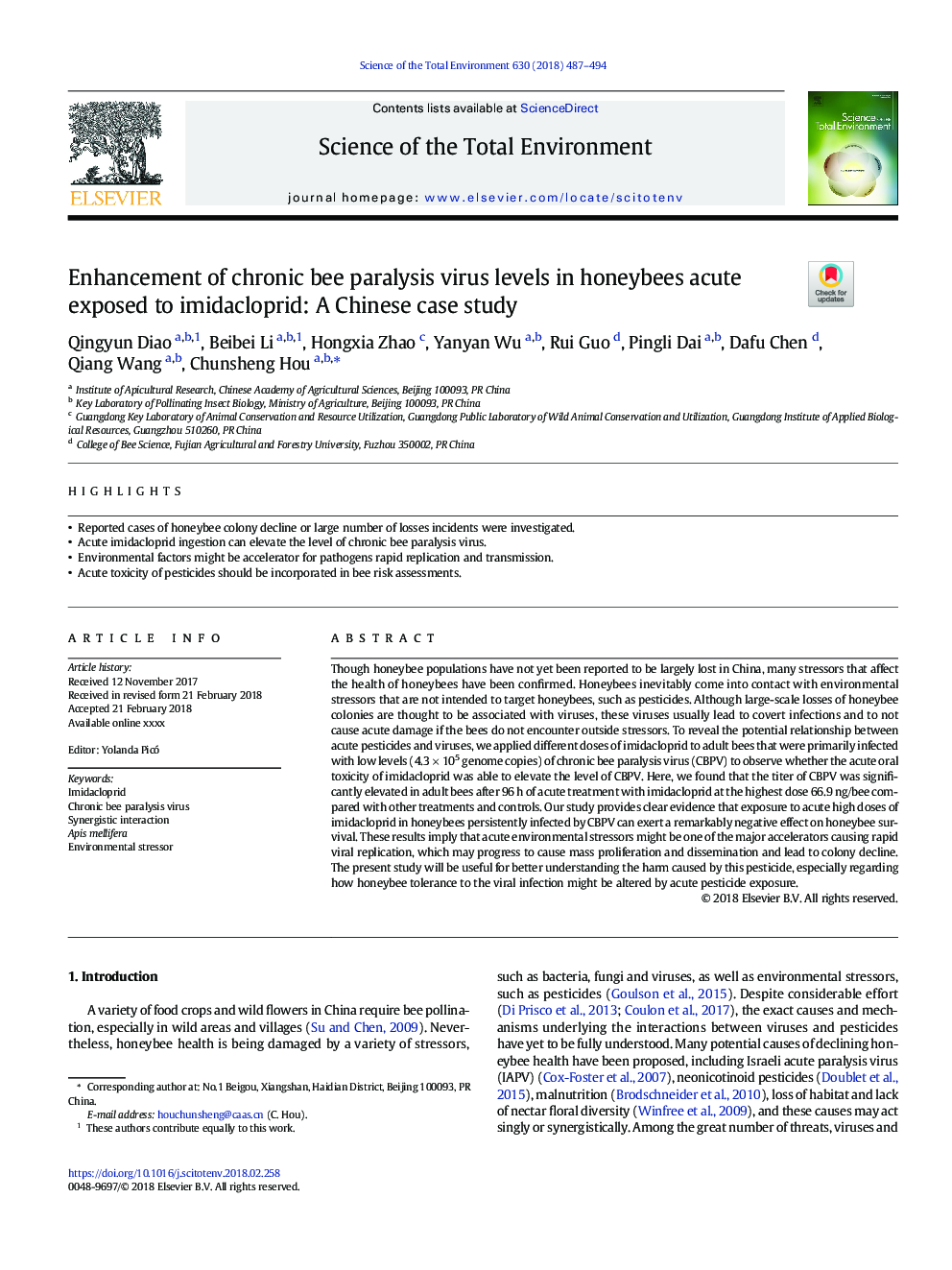| Article ID | Journal | Published Year | Pages | File Type |
|---|---|---|---|---|
| 8860341 | Science of The Total Environment | 2018 | 8 Pages |
Abstract
Though honeybee populations have not yet been reported to be largely lost in China, many stressors that affect the health of honeybees have been confirmed. Honeybees inevitably come into contact with environmental stressors that are not intended to target honeybees, such as pesticides. Although large-scale losses of honeybee colonies are thought to be associated with viruses, these viruses usually lead to covert infections and to not cause acute damage if the bees do not encounter outside stressors. To reveal the potential relationship between acute pesticides and viruses, we applied different doses of imidacloprid to adult bees that were primarily infected with low levels (4.3Â ÃÂ 105 genome copies) of chronic bee paralysis virus (CBPV) to observe whether the acute oral toxicity of imidacloprid was able to elevate the level of CBPV. Here, we found that the titer of CBPV was significantly elevated in adult bees after 96Â h of acute treatment with imidacloprid at the highest dose 66.9Â ng/bee compared with other treatments and controls. Our study provides clear evidence that exposure to acute high doses of imidacloprid in honeybees persistently infected by CBPV can exert a remarkably negative effect on honeybee survival. These results imply that acute environmental stressors might be one of the major accelerators causing rapid viral replication, which may progress to cause mass proliferation and dissemination and lead to colony decline. The present study will be useful for better understanding the harm caused by this pesticide, especially regarding how honeybee tolerance to the viral infection might be altered by acute pesticide exposure.
Keywords
Related Topics
Life Sciences
Environmental Science
Environmental Chemistry
Authors
Qingyun Diao, Beibei Li, Hongxia Zhao, Yanyan Wu, Rui Guo, Pingli Dai, Dafu Chen, Qiang Wang, Chunsheng Hou,
